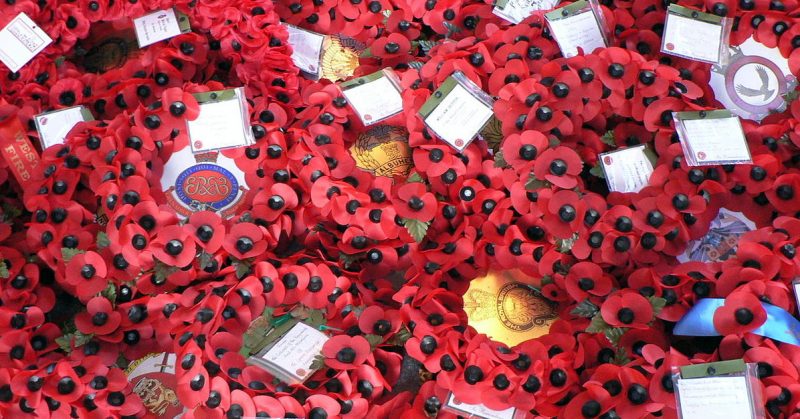Volunteers have sold red poppies for many years to raise funds for veterans. Here’s how that tradition began.
The red poppy has traditionally been the symbol of death, renewal, and life. The seeds of the red poppy can lie dormant in the soil for years. When the soil is overturned by a farmer plowing his field or construction workers or war, the red poppies cover the ground with beautiful flowers.
The fields of Northern France and Flanders were churned up by boots, hooves, and machines during World War I. After all the bombing and fighting, red poppies appeared by the thousands, covering those fields of death.
In 1915, Lt. Col. John McCrae was a physician working at a Canadian medical station on the Essex Farm, north of Ypres. Despite being in a state of exhaustion and having lost a good friend in the war, he was so moved by the site of all the flowers, he wrote the most famous poem of WWI.
McCrae was a veteran of the South African War. He was motivated by the red poppy as a symbol of the sacrifice made by the soldiers, so he wrote: “In Flanders Fields.” The poem became a hit around the world.
After McCrae died of pneumonia and meningitis in 1918, he was buried in a military cemetery near Calais, which made him one of the ones he had written about in his poem.
McCrae’s poem has bound the red poppy to the memory of World War I. The red poppy was eventually adopted by the British and Canadian Legions as a symbol of remembering WWI. A Frenchwoman, Ann Guerin, brought red silk poppies to England. The British Legion ordered 9 million of them and sold them on November 11, Armistice Day. They were quick to sell out and raised a large amount of money to help veterans with employment and housing.
The next year, Maj. George Howson set up the Royal British Legion Poppy Factory to employ disabled veterans. It is still in operation today. The demand for the poppies was so high in England that there were not enough for Scotland so Earl Haig’s wife set up the Lady Haig Poppy Factory in Edinburgh in 1926. Those poppies were sold exclusively in Scotland and were different from the English poppies in that they had four petals and no leaf. Disabled veterans still work making the poppies in the Lady Haig’s Poppy Factory, cecildaily.com reported.
In the US, Moina Michael was a war volunteer and academic who established the red poppy as a symbol in the States. The Veterans of Foreign Wars and the American Legion continue the tradition.
